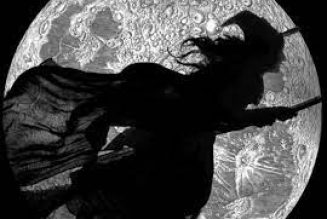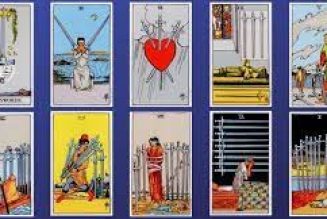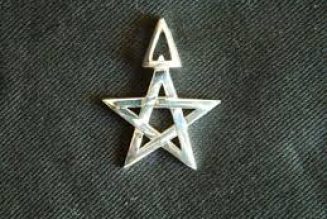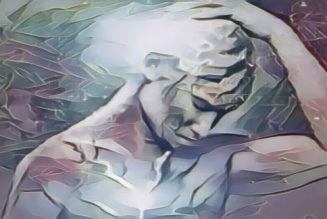The most important tool in Witchcraft is not the athame or the wand, it’s not the cauldron or the herbs, it’s not even the book or the spell—the most important tool in Witchcraft is the mind.
There are many definitions of Witchcraft, but the one I like most is that it’s a spiritual art rooted firmly in psychology and nature. It involves psychology, because it requires you to have control over the mind—the ability to focus, to enter different states of consciousness, to visualize, to create essentially a self-fulfilling prophecy through positive, deliberate brainwashing (for belief not only that you will achieve your goal, but have on some level, is essential). To utilize nature—which includes learning about and working with things such as herbs, roots, crystals, etc.— requires knowledge. To work with energy—that is to learn how to raise natural energies and direct them toward achieving one’s goal— requires knowledge, skill and developed mental discipline in psychic arts.
It is because of this that a student of The Craft should not begin by seeking spells or by gathering tools. In fact, once you’ve studied you’ll know how to construct your own custom-designed spells. With proper study, anything you have on hand can become a potential tool—and if there’s nothing on hand you can work without them. A student of The Craft should dive into two main activities: studying, and training the mind. This article deals with the latter.
Becoming a Witch
Witchcraft is something you develop from within.
Mindful Meditation
Training the mind all begins with starting a meditation regime. The more consistently you keep up with the routine, the more you will benefit from it. If you’re completely new to meditation, it can begin with just 5 minutes per day of focusing on your breath and putting your awareness in the moment. This is the traditional form of meditation, known as mindfulness. You don’t need to force yourself to clear your mind; you don’t need to think about anything—you simply let yourself be firmly rooted in the moment and let thoughts just drift by, as if you’re a tree at the edge of a flowing river. Acknowledge the thoughts as they go past, just don’t let them carry you away.
You can begin to expand the amount of time spent in meditation little by little over the first few weeks until you can do it for up to 30 minutes.
Creative Visualization
Once you’ve learned to meditate mindfully, you can move on to visualization. For some people, it’s hard to get a mental picture of something, but visualization doesn’t have to be actually visual. If you prefer, you can focus on an emotion, a physical sensation, a sound, a scent or whatever works for you. The key to visualization in magic is being able to experience the expected results of your spell in some way in your mind– to take your mind to that place in which you have your goal.
For example, if your spell is for financial prosperity, you can visualize an actual image of money in your wallet, or just see the color green (or gold, or whatever you associate with wealth). If you are more of an empath than visual, you might conjure up and hold onto the emotion you would feel if you had the money you needed (joy? Relief?). If you are more auditory than visual, you might imagine the sound of your voice counting your money, or paying your bills. If you’re more of a kinesthetic (tactile) person, you can try to hold on to the memory of what money feels like in your hands—or perhaps the feel of something you associate with riches, such as how satin sheets feel on your skin or how lobster and champagne taste on the tongue. Perhaps your strongest sense is olfactory, and the smell evokes the most powerful sensory experience: the scent of money, or the finest perfume you’ve ever whiffed, or perhaps something earthy like patchouli indicates prosperity to you.
Start working on holding on to your visualization (which ever sensory experience you choose to use) for a little more time in each meditation until you can work your way up to 20 or 30 minutes.
Raising Vibrations
One of the most difficult steps in mental training for Witchcraft is to hone your psychic awareness. Namely, you need to reach a point at which you are able to sense energy so that you can begin manipulating it and directing it. Being able to achieve a meditative state will help you raise your vibrations so you’re able to do this.
Another major factor in raising your vibrations is to keep your thoughts positive. Believe it or not, negative thoughts are like an anchor that just drag you down to a lower vibrational frequency. The more you allow yourself to fall into negative thinking patterns, the lower your frequency goes. Hating the world, hating yourself, telling yourself you can’t do it, complaining about everyone, blaming problems on everything, being argumentative, judgmental, fighting with people—this all lowers your vibrations to a point at which it will be difficult to sense energy, let alone control it.
This is where the mindfulness comes back into play, and recent studies confirm this. Being mindful and living in the moment is when we are at our most content. It’s a way to find a center of inner peace.
If you find you have a bad attitude in general, try being mindful during your waking hours, or use positive affirmations while you meditate. This is a way to essentially ‘brainwash’ yourself into having a better attitude, so that you can raise your own vibrational frequency.
Once your vibrational frequency is raised, you’ll find you’re able to better open your chakras, your ability to sense energy will dramatically improve and thus you’ll be ready for the next big step: learning to work with energy (for this is what the entire spell is designed to accomplish: raising, manipulating and directing energy toward the goal).
Before you get any book of spells, before you buy any candles or try any ritual magic, start at the beginning. Strengthen and hone that tool that’s going to make the difference between success and failure every time: the mind. These are the first steps on the road to practicing Witchcraft.







































